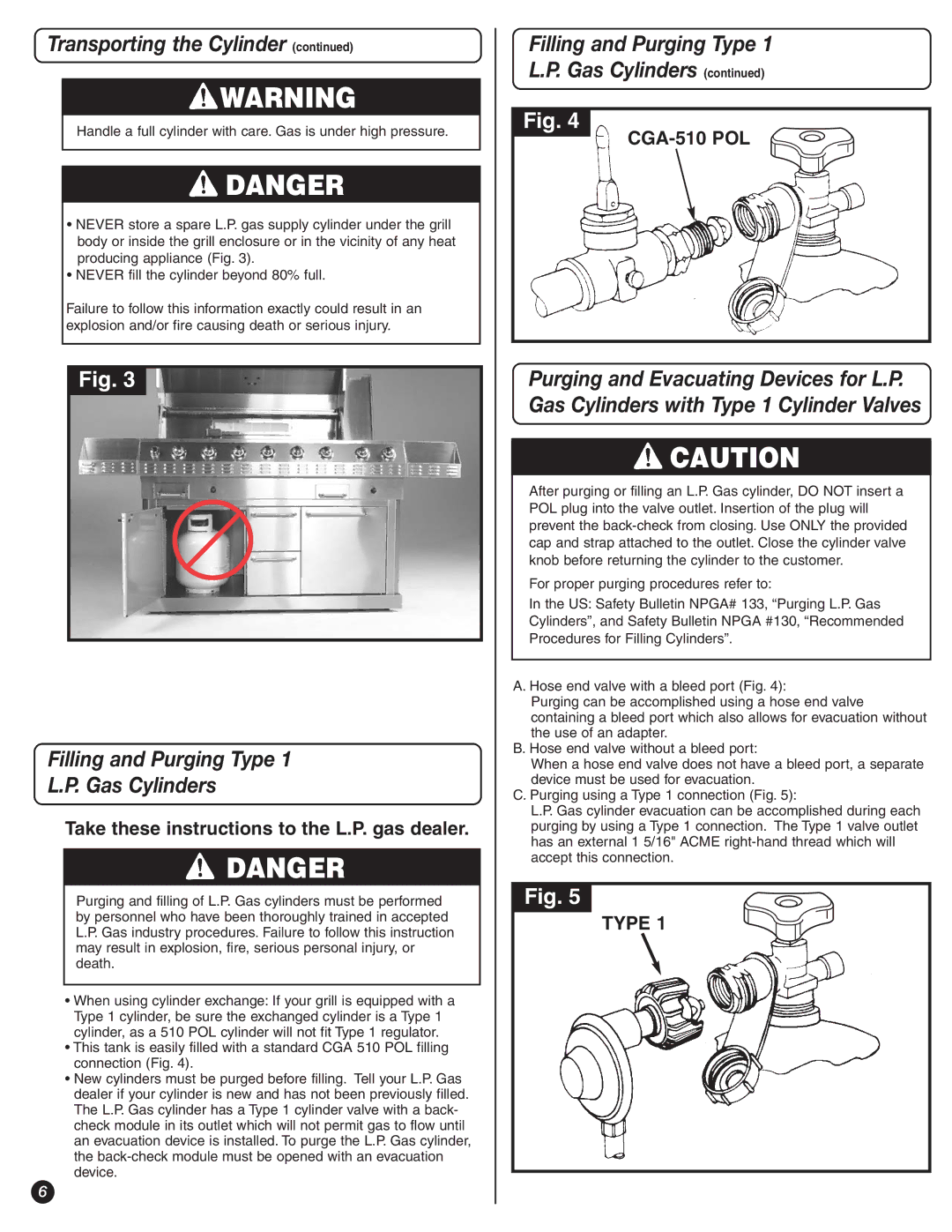
Transporting the Cylinder (continued)
![]() WARNING
WARNING
Handle a full cylinder with care. Gas is under high pressure.
![]() DANGER
DANGER
•NEVER store a spare L.P. gas supply cylinder under the grill body or inside the grill enclosure or in the vicinity of any heat producing appliance (Fig. 3).
•NEVER fill the cylinder beyond 80% full.
Failure to follow this information exactly could result in an explosion and/or fire causing death or serious injury.
Fig. 3
Filling and Purging Type 1
L.P. Gas Cylinders
Take these instructions to the L.P. gas dealer.
![]() DANGER
DANGER
Purging and filling of L.P. Gas cylinders must be performed by personnel who have been thoroughly trained in accepted L.P. Gas industry procedures. Failure to follow this instruction may result in explosion, fire, serious personal injury, or death.
•When using cylinder exchange: If your grill is equipped with a Type 1 cylinder, be sure the exchanged cylinder is a Type 1 cylinder, as a 510 POL cylinder will not fit Type 1 regulator.
•This tank is easily filled with a standard CGA 510 POL filling connection (Fig. 4).
•New cylinders must be purged before filling. Tell your L.P. Gas dealer if your cylinder is new and has not been previously filled. The L.P. Gas cylinder has a Type 1 cylinder valve with a back- check module in its outlet which will not permit gas to flow until an evacuation device is installed. To purge the L.P. Gas cylinder, the
6
Filling and Purging Type 1
L.P. Gas Cylinders (continued)
Fig. 4
Purging and Evacuating Devices for L.P. Gas Cylinders with Type 1 Cylinder Valves
![]() CAUTION
CAUTION
After purging or filling an L.P. Gas cylinder, DO NOT insert a POL plug into the valve outlet. Insertion of the plug will prevent the
For proper purging procedures refer to:
In the US: Safety Bulletin NPGA# 133, “Purging L.P. Gas Cylinders”, and Safety Bulletin NPGA #130, “Recommended Procedures for Filling Cylinders”.
A. Hose end valve with a bleed port (Fig. 4):
Purging can be accomplished using a hose end valve containing a bleed port which also allows for evacuation without the use of an adapter.
B. Hose end valve without a bleed port:
When a hose end valve does not have a bleed port, a separate device must be used for evacuation.
C. Purging using a Type 1 connection (Fig. 5):
L.P. Gas cylinder evacuation can be accomplished during each purging by using a Type 1 connection. The Type 1 valve outlet has an external 1 5/16" ACME
Fig. 5
TYPE 1
